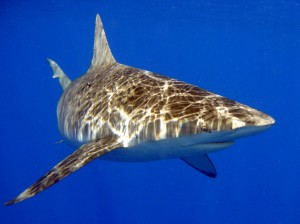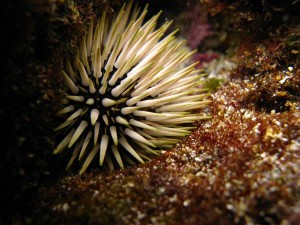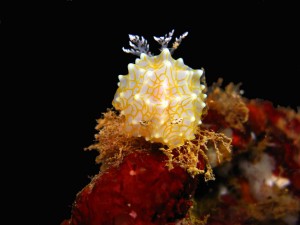Starting out in Underwater Photography
Most divers want to document the underwater world at some point in their careers. Whether the intended subjects include the alien sea life, mountainous terrain or some intriguing find, higher quality photos get more attention. Underwater photography is a specialized skill that many spend lifetimes and life’s earnings pursuing. This article will guide the aspiring photographer through muddled and constantly evolving equipment choices.

Start small
The choice of cameras available for underwater use today is just staggering. Therefore, it is important to narrow down the options as much as possible. As a beginning photographer, the first slice to take is to limit the options to just compact cameras. This will:
1. Teach the basic techniques unique to underwater photography
A world in constant movement, particulates, and a near complete loss of any red colors are all problems unique to underwater photography. Add to that the unique approaches to in-water camera angle, zoom length, lens-to-subject distance, and exposure and the beginning underwater shutterbug have their hands full.
2. Determine what kind of subjects excite you the most
Be it wrecks, sharks, reef-scapes, or video, most underwater photographers tend to gravitate toward a particular niche. Finding your place with a cheap setup will make for better decisions when it comes time to invest in a larger rig.
3. Give an idea if underwater photography is right for you.
It isn’t uncommon for divers to purchase a camera and find out that they don’t take many pictures. Starting small allows divers to wet their toes and find out if the field is right for them.
4. Stay out of the way
Smaller cameras can be clipped to the BC where they stay until needed. Larger setups require constant attention and become the purpose of the dive.
5. Keep it simple
Most compact cameras are designed with the beginning photographer in mind. They tend to include a plethora of automatic functions that suit many circumstances. A word of caution is necessary, however, as many of these automatic functions were designed without considering the underwater environment.
There are still enough compact cameras to make one’s head spin, and each is designed to fit a certain market. The easiest to use are bare-bones basic cameras with no manual functions whatsoever. Some have a series of specialized functions designed to work with a particular set of circumstances. Others take the intimidation factor out of manual exposure with “priority” functions that ask the aspiring beginner to set the shutter speed or aperture and let the camera do the rest. The most advanced compact cameras allow for complete manual exposure settings and usually pair with top-notch optics and sensors for the serious enthusiast. A category known as “micro 4/3’s” cameras has come on the scene only recently. They usually feature interchangeable lenses and a larger sensor to give the quality of a DSLR without the bulk. Housings are only starting to pop up for micro 4/3’s setups.
Some companies offer cameras that are designed for underwater use from the ground up. These sound like a good idea at first as they tend to be cheap and easy to use. While these ideas have worked well in the past (more than a few pros still use Nikonos V’s today), larger companies like Canon, Nikon and Olympus have taken the torch by investing vast resources in superior optics development. Therefore, if outstanding picture quality is the priority, it is usually preferable to invest a little more in the best quality camera in the budget and its associated waterproof housing.
Select a Compact Camera
To reiterate, the choices available to the beginning underwater photographer in order from most basic to complex are:
- The made-for-underwater compact (Example: Sealife DC1400)
- Basic big-company compact (Example: Canon S100)
- Complex big-company compact (Example: Canon G15)
- Micro four-thirds cameras (Example: Canon EOS-M)
Select a camera style by first being honest about where your abilities are as a photographer and where your photography will eventually go. People that wish to take a few snapshots to have proof of their shark encounter would probably do best with a camera that does most of the work for them. On the other end of the scale, aspiring pros may wish to start by building a camera setup that will follow them through their career. In that case, a micro 4/3’s camera would fit the bill nicely.
Picking a brand will likely narrow the choices down to just one or two cameras. Brands are a very personal preference. Usually once you start with a brand, you will follow their lineup for years. This article won’t pretend to try to sway your choice here because while I shoot Canons, I know pros that shoot Nikons, Olympus, Sony and even a few friends who get awesome shots with Fuji. The best advice is to find a photographer whose work you like and mimic what he/she shoots.

Selecting a Housing
The purchasing process is almost over. Except in the case of ready-for-underwater cameras, there is one more important piece of equipment to buy: the housing. And again, this depends on the eventual goals of the photographer. Housings made by camera manufacturers such as Canon and Nikon tend to allow full access to the camera’s functions, almost to a fault. One of my first underwater housings (Canon A650 IS with Canon WP-DC18 housing) even gave me access to the camera’s onboard print function which begged the question, “who is printing photos underwater?” The manufacturer’s housings also tend to be compact, lightweight, cheaper and fairly rugged.
There is some fine print, however that limits the versatility of manufacturer’s housings. The depth rating for these housings is generally a safe and conservative 100-130 feet. This is fine for most recreational users, but rubbish for a tech diver or professional freediver whose hair doesn’t even get wet until 130. And then there is the choice of accessories, or should I say complete lack of accessories. This is where aftermarket housings offer something special for the more advanced photographers.
Companies like Fisheye, Sea and Sea, Fantasea, and Ikelite design their housings with a more advanced diver in mind. They generally go deeper with more options than a housing produced by a camera company. What other options? For starters, TTL strobe gun metering provides optimal lighting in most circumstances but requires a specific port and cable connection absent on most manufacturer housings. Also, most aftermarket companies offer wet lenses or ports that increase the versatility of the camera. For shooting sharks and whales, nothing beats a fisheye lens, but for the little joys in life, a diopter is priceless. Both are options offered primarily by aftermarket companies.
The process of buying an underwater camera may seem daunting. Start by asking a few basic questions about your abilities and goals and make choices from there. By breaking the system down into its composite parts of camera THEN housing, you can place one foot in front of the other to be more confident in your camera choice.

- The Case for Shark Feeding – March 27, 2014
- Create Your Own Luck – January 26, 2014
- Starting out in Underwater Photography – December 25, 2013

 CAD
CAD

3 comments
Excellent topic. Nice, well written article. Covers the subject very well.
I want to if go pro hero hd is ok for beginners in underwater photography
Hi Udyan,
Sure, GoPro is great for videos underwater. If you are interested in creating stills, it would be wise to start with a high-end compact camera + housing such as the G16 bundle, which is great for beginners and offer many options to upgrade and advance: http://www.housingcamera.com/Fantasea-Line-13911-Housing-Canon-G16-p/13911.htm
If you have any more questions feel free to contact us via contact@housingcamera.com or via online chat.